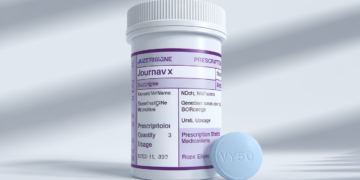Hold onto your ice packs, folks—the future of pain relief just got a major upgrade! The FDA recently approved Suzetrigine, the first non-opioid painkiller in 25 years, and it’s shaking up the world of medicine. Imagine a world where managing pain doesn’t mean risking addiction or nasty side effects. Sounds like science fiction? Not anymore! Let’s dive into why this breakthrough is literally a game-changer for millions of people.
What’s the Big Deal About Suzetrigine?
Let’s start with the star of the show: Suzetrigine. This isn’t your grandma’s painkiller. For the first time in over two decades, the FDA has approved a non-opioid medication designed to tackle moderate to severe pain. Why is this such a huge deal? Well, opioids (like oxycodone or morphine) have been the go-to for severe pain since… forever. But they come with big risks: addiction, overdose, and side effects like drowsiness or nausea. Suzetrigine offers a safer path—without the opioid drama.
Scientists say Suzetrigine works by targeting specific nerve pathways that send pain signals to the brain. Think of it like blocking a spam email before it hits your inbox. Cool, right? Early trials show it’s effective for conditions like arthritis, post-surgery pain, and nerve damage—all with a lower risk of addiction.
Flashback: The Last Non-Opioid Painkiller Approved
Before Suzetrigine stole the spotlight, the last non-opioid painkiller to get FDA approval was Lyrica (pregabalin) in 2004. Lyrica became famous for treating nerve pain, fibromyalgia, and seizures. But here’s the kicker: it’s been 20+ years since something truly new entered the scene. That’s longer than TikTok has existed!
The gap highlights how tough it is to develop non-opioid drugs. Pain is complicated—it’s not just “ouch,” but a mix of signals, emotions, and brain chemistry. Creating a pill that tackles pain without causing other problems? Super challenging. But Suzetrigine’s success gives hope that science is finally cracking the code.
Painkillers 101: Types, Roles, and Side Effects
Not all painkillers are created equal. Let’s break down the major players in your medicine cabinet:
- NSAIDs (Advil, Aleve):
- Good for: Headaches, muscle aches, inflammation.
- Side effects: Stomach ulcers, kidney issues if overused.
- Acetaminophen (Tylenol):
- Good for: Fevers, mild pain.
- Side effects: Liver damage in high doses (no joke!).
- Opioids (Oxycodone, Hydrocodone):
- Good for: Severe pain (e.g., after surgery).
- Side effects: Addiction, constipation, slowed breathing.
- Antidepressants/Anti-Seizure Drugs (Lyrica, Cymbalta):
- Good for: Nerve pain, chronic conditions.
- Side effects: Dizziness, weight gain, dry mouth.
- NEW KID: Suzetrigine 💊
- Good for: Moderate to severe pain (without the opioid risks!).
- Side effects: Mild nausea or headaches in early trials.
The key takeaway? Every painkiller has pros and cons. Suzetrigine’s approval means doctors and patients now have a safer tool in their toolkit.
Why Non-Opioid Options Matter
Let’s get real: the U.S. is in the middle of an opioid crisis. Over 80,000 people died from opioid overdoses in 2021 alone. Many started with a legit prescription for pain but fell into addiction. Suzetrigine isn’t just a new drug—it’s a lifeline.
For patients, this means:
- Fewer sleepless nights worrying about addiction.
- Better pain control for chronic conditions (looking at you, arthritis warriors!).
- More confidence to try treatments without harsh side effects.
For doctors? It’s like finally getting a new weapon in a battle they’ve been fighting for decades.
What’s Next for Pain Management?
Suzetrigine’s approval is just the beginning. Researchers are already exploring even weirder solutions:
- Gene therapy to “turn off” pain signals.
- Virtual reality to distract the brain during procedures.
- CBD-based creams for localized relief.
But for now, Suzetrigine is the MVP. It’s proof that science can outsmart pain without playing Russian roulette with opioids.
Final Thoughts: A Bright Future for Pain Relief
The FDA’s stamp of approval on Suzetrigine isn’t just a win for Pharma Twitter—it’s a win for humanity. After 25 years of waiting, we finally have a fresh option that balances power with safety. Whether you’re a patient tired of opioid side effects or a parent worried about your kid’s sports injury, this news is worth celebrating.
So next time you pop a pill for pain, remember: the future is looking brighter (and way less addictive).









































Discussion about this post